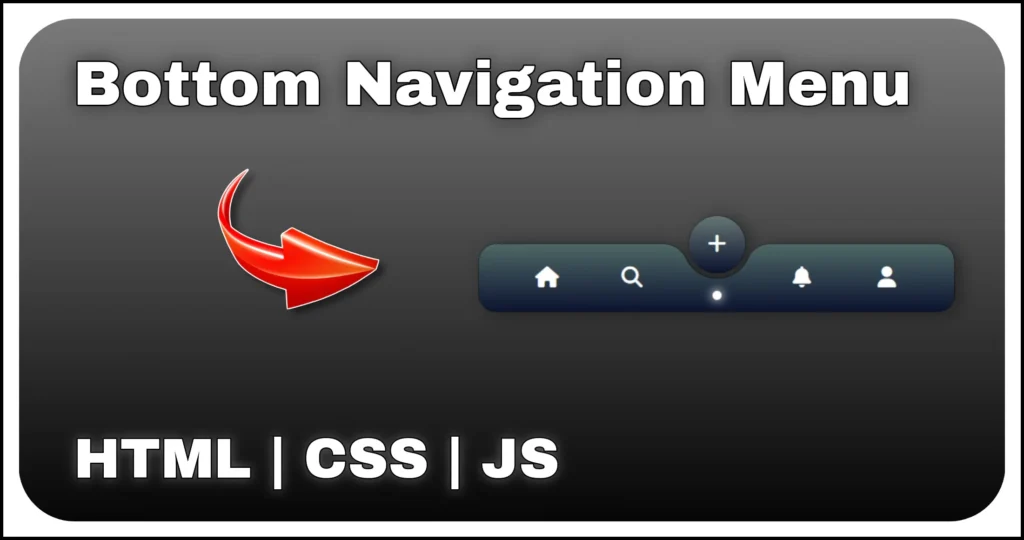Enhance your website’s interactivity with this beautifully designed social media icons with hover effect using just HTML and CSS. This UI component offers a compact vertical list of social links that expands on hover, making it perfect for modern portfolios, landing pages and personal blogs.
With real-time transitions, gradient effects and responsive hover interactions, this design delivers both style and functionality — no JavaScript required!
HTML Structure
In the HTML section, we use an unordered list to organize our clickable social media icons. Each item is a list element containing an anchor tag, which includes the Font Awesome icon, a background layer and the platform name text.
<div class="main-container">
<ul class="social-container">
<li class="item">
<a href="#">
<span class="fab fa-instagram"></span>
<span class="bg insta-bg"></span>
<span>Instagram</span>
</a>
</li>
<li class="item">
<a href="#">
<span class="fab fa-linkedin"></span>
<span class="bg link-bg"></span>
<span>Linkedin</span>
</a>
</li>
<li class="item">
<a href="#">
<span class="fab fa-whatsapp"></span>
<span class="bg whats-bg"></span>
<span>Whatsapp</span>
</a>
</li>
<li class="item">
<a href="#">
<span class="fab fa-pinterest"></span>
<span class="bg pint-bg"></span>
<span>Pinterest</span>
</a>
</li>
<li class="item">
<a href="#">
<span class="fab fa-facebook"></span>
<span class="bg face-bg"></span>
<span>Facebook</span>
</a>
</li>
</ul>
</div>.main-containercenters the list vertically and horizontally on the page..social-containeris a vertical flexbox list for all social links.- Each
.itemrepresents a single social icon, composed of:- A Font Awesome icon (
<span class="fab fa-*">) - A
.bgspan for animated hover background - A hidden
<span>with the social media name, which slides into view on hover.
- A Font Awesome icon (
This structure provides a scalable base for adding as many social platforms as needed. With this simple semantic structure, we prepare the foundation for creating an interactive and lightweight social sidebar, perfect for embedding on any modern web interface.
Styling Social Media Icons with CSS
Now let’s style the component with modern hover effects, colorful gradients and smooth animations using pure CSS. The CSS enhances the user experience with hover transformations, background transitions and slide-in effects for social names. Each icon background color is tailored to the respective brand.
.main-container {
display: flex;
height: 100%;
width:100%;
justify-content: center;
align-items: center;
}
.social-container {
display: flex;
flex-direction: column;
gap: 15px;
padding: 0;
margin: 0;
}
.item {
width: 40px;
height: 40px;
display: flex;
cursor: pointer;
position: relative;
transition: all .3s;
list-style: none;
}
.item a {
width: 100%;
height: 100%;
display: flex;
text-decoration: none;
}
.fab {
width: 100%;
height: 100%;
font-size: 18px;
transition: .3s;
display: grid;
place-items: center;
border-radius: 50%;
color: rgba(255, 255, 255, 0.878);
border: 1px solid rgba(156, 156, 156, 0.256);
}
.bg {
position: absolute;
width: 100%;
height: 100%;
z-index: -1;
border-radius: 30%;
transition: all .3s;
}
.insta-bg {
background: linear-gradient(45deg, #f09433 0%, #e6683c 25%, #dc2743 50%, #cc2366 75%, #bc1888 100%);
}
.link-bg {
background: rgb(1, 80, 123);
}
.whats-bg {
background: #15a54a;
}
.pint-bg {
background: #E60023;
}
.face-bg {
background: #215eae;
}
.social-container .item:hover .bg {
transform: rotate(25deg);
transform-origin: bottom;
}
.social-container .item:hover .fab {
background-color: rgba(156, 156, 156, 0.466);
}
.social-container .item:hover span:last-child {
transform: translateX(60px);
width: 100px;
}
.social-container .item span:last-child {
position: absolute;
color: white;
font-family: 'calibri';
width: 0px;
overflow: hidden;
z-index: -1;
top: 10%;
transform: translateX(20px);
transition: .3s;
} - The
.main-containerand.social-containercenter and stack the icons vertically. - The
.fabclass styles the Font Awesome icons and.bgadds a rotating background on hover. - Brand-specific background gradients (e.g.,
insta-bg,link-bg) visually distinguish each platform. - On hover, the name span (
span:last-child) smoothly slides out usingtransformandwidthtransitions. - The icons also gain a soft transparent background to highlight the interaction.
This CSS-only design creates a polished and professional animated sidebar UI. Its lightweight structure ensures fast load times and smooth animations without sacrificing visual impact.
This animated social media icons with hover effect is a perfect addition to any modern website. Using just HTML and CSS, you can create a visually compelling way to link to your social platforms while maintaining minimal code and no dependencies beyond Font Awesome.
Whether you’re building a portfolio, landing page or dashboard, this responsive social link sidebar will grab attention and encourage engagement.


